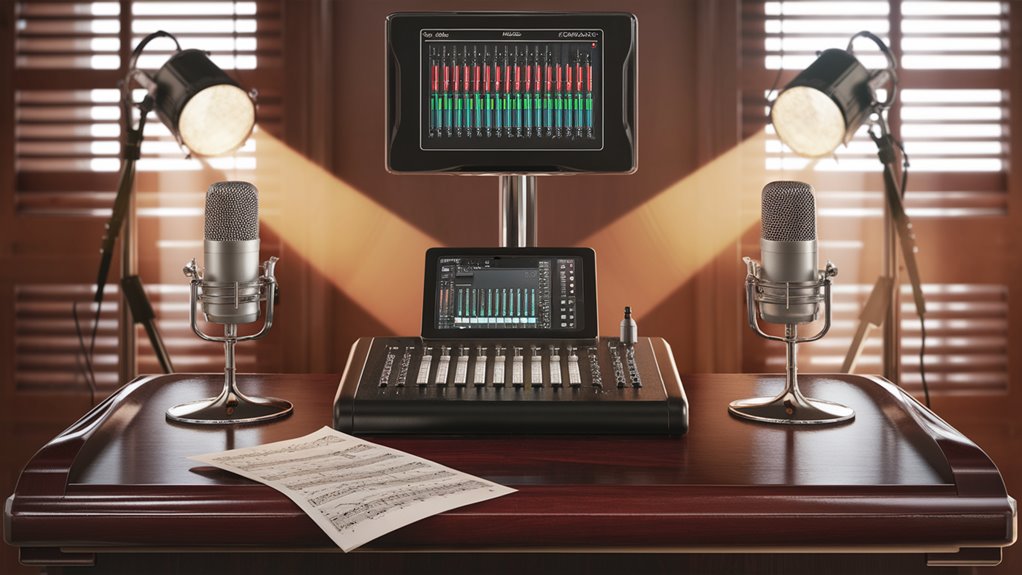
How to Build Confidence in Singing Through Regular Karaoke

Start Singing with Comfort
Select 5-7 songs that you are familiar with and find easy to sing. These songs will form the core of your performances as you improve your singing skills and stage presence. Pick songs you enjoy and perform well consistently.
Key Breathing Ways
Practice diaphragmatic breathing for 5-10 minutes. Place your hands on your chest and belly to ensure correct technique. This skill helps maintain an even voice and better control your breathing while singing.
Watch and Grow
Frequently record your karaoke sessions to evaluate your progress. Focus on:
- Your intonation
- Steadiness of breath
- Vocal sound quality
- Volume control
- Rhythm and song flow
Master the Mic
Improve your mic skills by:
- Holding it at a 45-degree angle
- Maintaining a distance of 2-3 inches from your face
- Ensuring clarity of sound
- Standing upright
- Keeping shoulders back
Join and Learn
Engage in karaoke groups to:
- Enhance skills through live performances
- Receive constructive feedback
- Learn from experienced singers
- Boost stage confidence
- Expand your song repertoire
Regular karaoke participation offers real singing practice in a supportive environment, enhancing your enjoyment and skills.
Know Your Songs
When beginning your singing journey, use familiar songs to concentrate on refining your technique.
Pick songs that are easy for you to perform, allowing more focus on the quality of singing rather than learning new material.
Pick Your Songs Carefully
Select 5-7 songs that complement your voice type:
- Rhythmically engaging
- Easy to follow
- 이 블로그 글 전체 읽기
- Suited to your vocal range
Get Better by Doing

Maintain a consistent singing practice. Record and assess:
- Your pitch accuracy
- Beat consistency
- Breath management
- Vocal fit within the song
Identify areas for improvement and focus on them. Progressing with these songs can prepare you for more challenging pieces.
Keep Track
Monitor your progress by:
- Taking notes on breath control
- Assessing vocal precision
- Evaluating tone clarity
Familiar songs provide a solid foundation for tackling more complex performances later.
Work on Your Breathing
Mastering diaphragmatic breathing is essential for a strong singing capability and sustained breath. This practice aids in note precision and endurance during long phrases.
Position your hands correctly—one on your chest and the other below your rib cage—to begin practicing.
How to Breathe Right
Ensure your belly expands during inhalation without chest movement.
Visualize breathing in three phases: lower lungs, middle, then upper.
You are executing correctly if only your belly hand moves. Practice this daily for 5-10 minutes.
Try Tougher Breathing
The hiss test refines breath control. Inhale deeply, then exhale slowly through parted teeth, producing a hissing sound. Gradually extend the hiss duration. Regular practice enhances vocal stability, vital for demanding songs.
Listen and Learn
Recording your singing offers valuable insights into your performance quality.
Utilize high-quality recording devices for singing experience superior audio clarity.
Maintain consistent recording methods for accurate progress tracking.
What to Look for
Examine these aspects when reviewing recordings:
- Pitch accuracy
- Rhythmic consistency
- Effective breathing
- Volume dynamics
- Lyric clarity
- Authenticity of emotional expression


